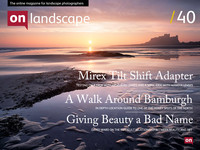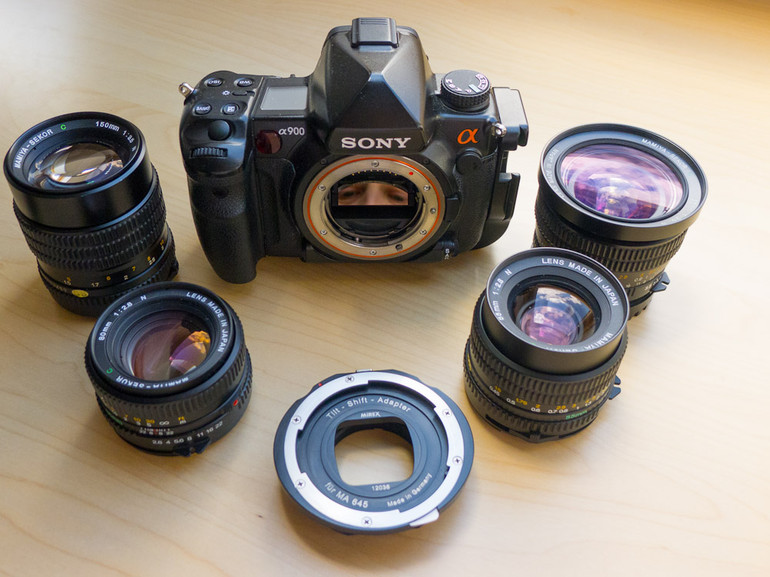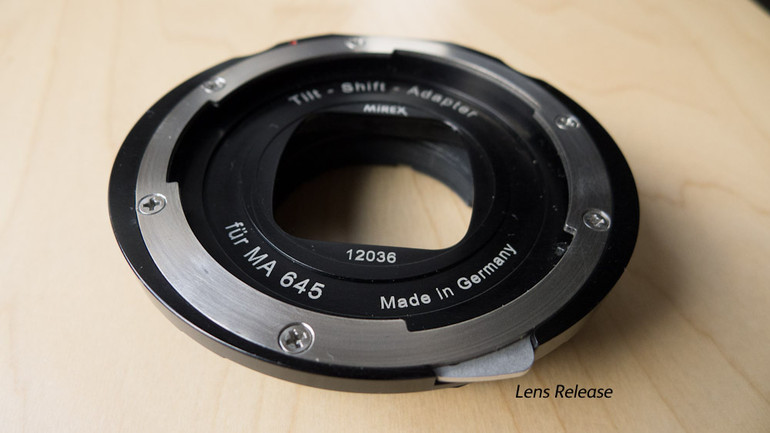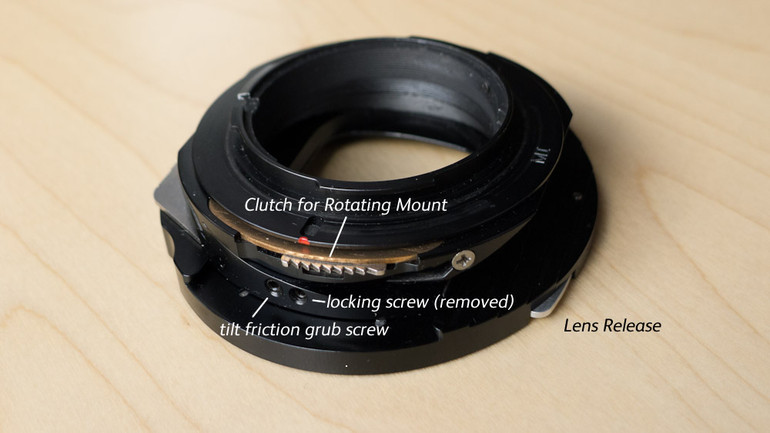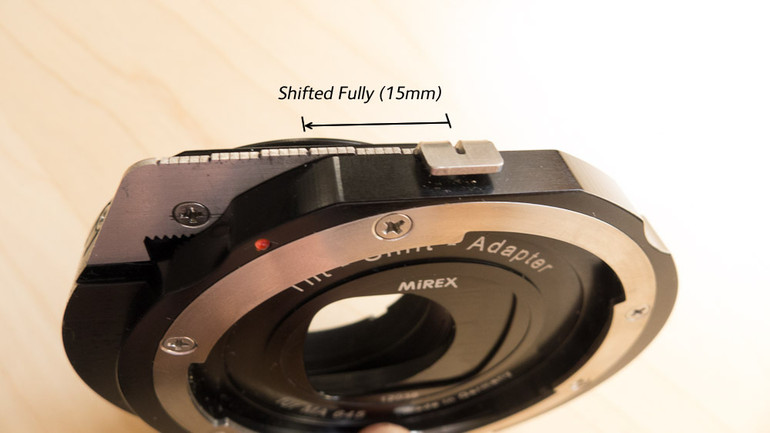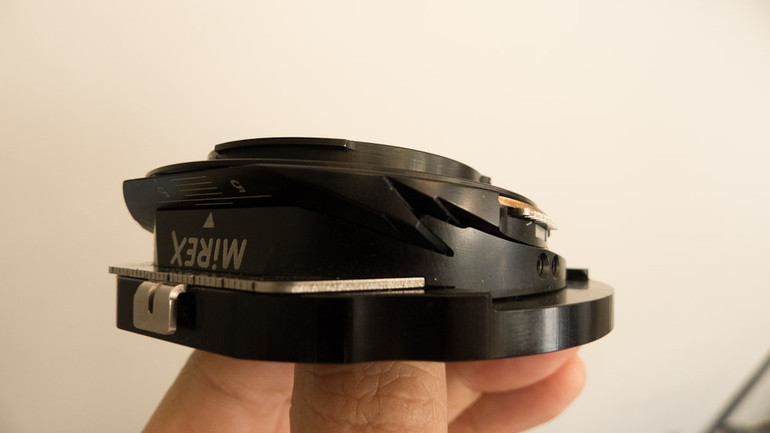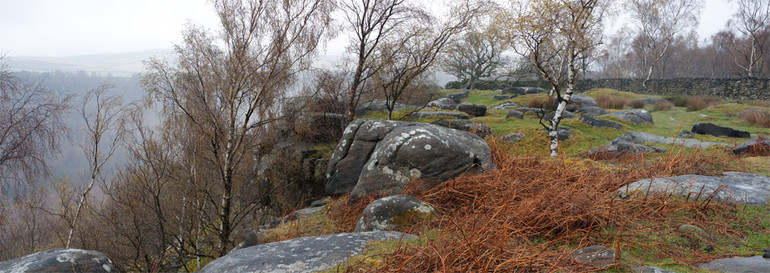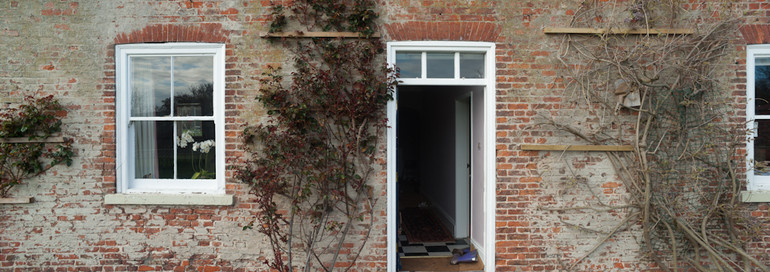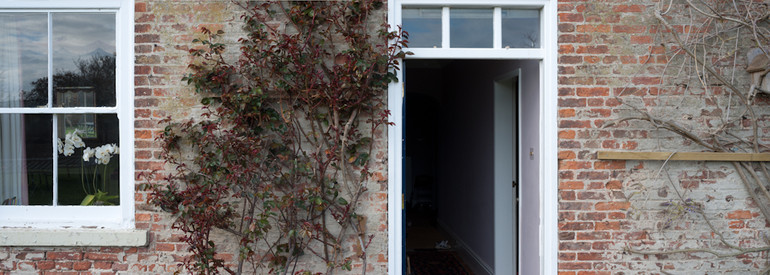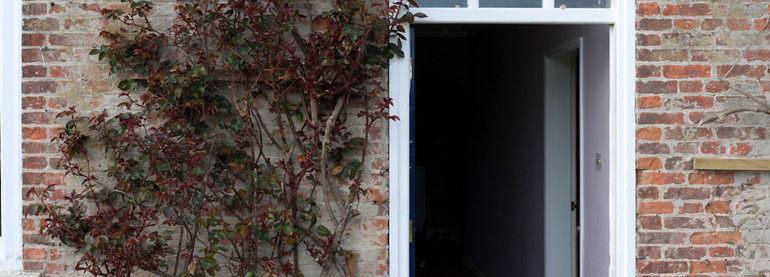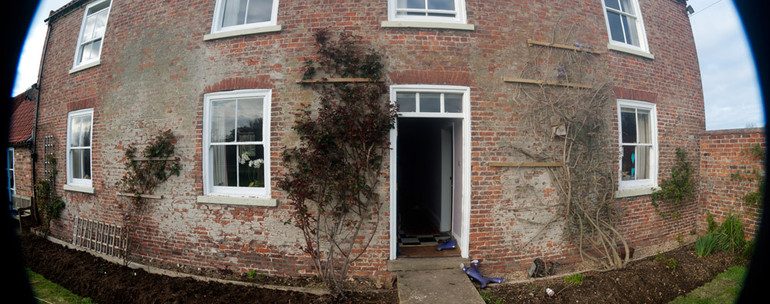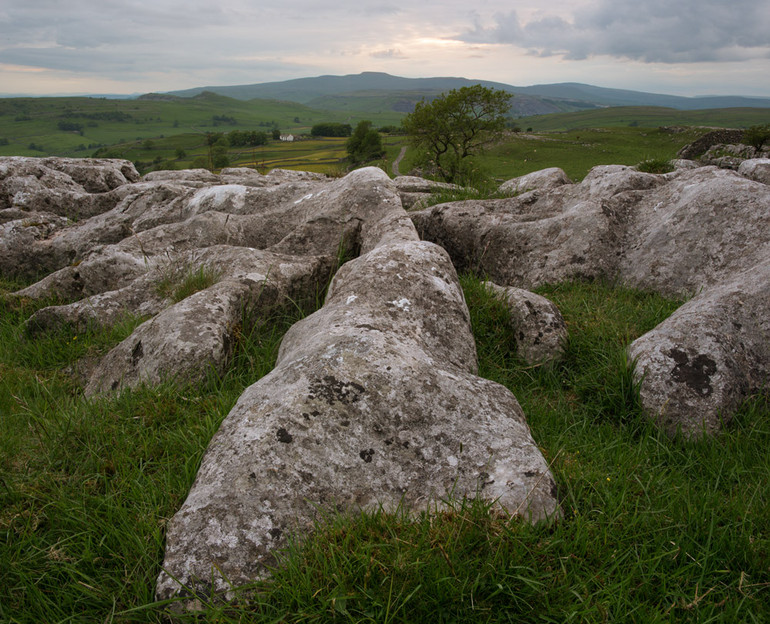An acceptable alternative to tilt/shift lenses?

Tim Parkin
Amateur Photographer who plays with big cameras and film when in between digital photographs.
With everything there is always a downside though and in dedicated tilt shift lenses it is most definitely price. The 17mm, 24mm, 45mm and 90mm Canon lenses costing £1,900, £1,700, £1,200 and £1,100 respectively and the Nikon 24mm, 45mm and 85mm all costing £1,400. This means a tilt shift collection would set you back approx £4k (ignoring the esoteric 17mm). And that's only if you use Canon or Nikon - if you use any other brand of camera body you're out of luck.
There are alternatives though. Hartblei have for some time produced their 'super rotator' lenses which are hand made dedicated lenses available on a variety of mounts. Simon Miles reviewed one of these in a previous article 'Zeiss Tilt Shift Lenses for your DSLR'. I can't comment too much about these but looking at various reviews online, the results are acceptable to good unshifted but dissapointing when shifted any significant amount.
Quite recently I sold all my Canon gear and bought a Sony A900, replacing my 15mm fisheye with an old Minolta 16mm fisheye and my trusted 24-105 f/4 with a ridiculously cheap, heavy and good Minolta 28-135. What I really wanted was a couple of tilt shift lenses but I knew there were none available with a Sony mount.
However, whilst browsing the subject I came across a review of a tilt-shift adapter from a German company called 'Mirex'. That review is here. The Mirex seemed like a great option and allowed the use of cheap Mamiya manual focus lenses (and others but I was looking for Sony mount adapters).
A quick email to check compatibility, £350 down and a short wait (good delivery times) and I had one of them in my hands. I also had a 35mm, 55mm and 80mm via Ffordes and Teddington Photographic. The 55mm and 80mm have a great reputation and are both f/2.8. The 35mm isn't so sharp supposedly but it's as wide as you'll get on medium format lenses without going fisheye. The lenses cost me roughly £250 each, not cheap when you add to the adapter cost but compared with the cost of a single dedicated tilt shift it starts to look quite attractive. I got the equivalent of four tilt/shifts for a total of £1,300. But is it any good? We'll get there!!
The adapter is black anodised metal with stainless steel and brass parts. The tilt only works in one direction and the shift is always at 90 degrees to it but you have a lot of movement, about 15mm in either direction to allow a full side by side in portrait orientation or a fairly panoramic 3x1 stitch in landscape orientation; Tilt also is fairly large giving a 10 degree tilt which should be enough for all but long lens close up work. The adapter also freely rotates upon releasing a simple clutch which has detents at approx 22.5 degrees.
There is no gearing, adjustments are made by unlocking the shift as shown in the diagram below or with a tension control on the tilt. Tilt tension is supplied by two screws, a grub screw for overall tension and a locking screw which unfortunately fouls on the Sony viewfinder prism so I've removed it. Thankfully you can apply just enough tension to hold the tilt on heavier lenses whilst still being able to apply small or large movements (although getting 0.5 degree tilts using this tension means using judicial 'taps' with heel of your hand).
Mamiya lenses have the advantage of being particularly light (especially compared with the Hasselblad 40mm as I saw when we moved onto Joe's D800) and with the f/2.8 aperture are quite easy to see where the plane of focus is, especially with the bright 100% Sony viewfinder.
So, what does the package work like? Very well it seems - I took the camera out on a very, very rainy trip with Dav Thomas and took my first tilted pano with the 35mm lens combining two landscape frames. I 'zoomified' the result and you can click on the image below to get to it. You can download the full jpg here too.
As you can see, an 11,000 x 4,000 pixel image which seems pretty sharp to the edges - and it's edge sharpness that turns me on more than overall resolution. This is the equivalent of a 24mm lens panorama.
My next outing was with family and I had the opportunity to shoot a detail shot of some bramble with an 80mm f/2.8 lens, using compound tilt (tilt at an angle instead of vertical or horizontal) to get the main features all in focus and yet have a very small depth of field elsewhere.
And also had an opportunity to test out the image circle and sharpness by shooting - yes, the side of a house! Geek subject matter! :-) You can download the full size jpg's here 35mm, 55mm & 80mm. You'll have to 'right click' on these to download otherwise they'll open in a strange javascript doo-hickey.
As you can see the 35mm gets a little soft in the corners but it's sharp enough for a non-shifted frame and is OK for small shifts. It's not bad for reasonable size prints to be honest.
However, the 55mm and 80mm are astonishingly sharp! Just before this test I managed to get a 24mm Mamiya lens - it was a little bit of a fishy purchase though (groan!) direct link.
The 24mm has a little bit of barrel distortion :-) but it corrects surprisingly well.

Although it's very, very smeary at the edges! If you only defish it a bit though and do some chromatic abberation removal - the results can be quite good (considering the ridiculousness of it all!)
Back to the 'normal' lenses though, the amount of tilt available will get your focus plane very close to the camera (imagine a plane of focus that intersects about 12 inches below the camera and shoots out toward the horizon) and in most situations you will probably only be using one or two degrees of tilt.
Once I'd become familiar with the adapter and upon finding out that Joe Cornish had bought a Nikon D800, the idea occurred to purchase a Nikon to Hasselblad tilt/shift adapter so that Joe could use his collection of Hasselblad lenses (NB You can't mount Mamiya lenses on the Nikkor because of large distance between sensor and lens mount leaving no room for an adapter).
The Nikon/Hasselblad adapter has the advantage of a tripod mount so that you can use the D800 like a sliding back and make perfect side to side stitches. Well I took the adapter out when Joe and I spent a couple of days in the Dales recently and we tried a quick shot with his 40mm CFE Zeiss lens doing just that side by side stitch and we took a quick look at the results and I have to say we were quite impressed. A 10,000 x 7,500 pixel file which was pin sharp into the corners with only a very, very small amount of chromatic aberration in the extreme edges. Have a look at the zoomify by clicking on the image below.
Don't worry about the distance, we focussed the plane on the horizon to see how the depth of field would drop down into the shot (not much was the answer). What was stunning was the consistency of sharpness across the whole frame - and it's this consistency of sharpness that I personally strive for (and I'm sure that Joe agrees).
The next day we were a little bit more formal about testing the adapter and shot the same scene with all of the lenses we had available for the Nikon and the Sony - 40mm Zeiss Distagon CFE, 60mm Zeiss Distagon and 100mm Zeiss Planar for the Nikon and 35mm and 55mm Mamiya for the Sony. We did a little video intro too..
and here is a quick demo of the device itself.
I thought hard about how to present this next in various interactive ways and in the end I figured you are probably better off downloading these to play with. However, I have created a 'zoomify' version of each one and if you want to compare you could open two of them in separate tabs in a browser and then flick between them.
The table shows three Hasselblad lenses on the Nikon D800 and two Mirex lenses on the Sony A900. Each was focussed on the horizon, then on a edge of the limestone pavement - both wide open - and then stopped down to f/16 to show the depth of field attained. Then the lens is tilted to get a plane of focus from the limestone to the horizon. We didn't spend a lot of time getting the plane of focus perfect on each shot but hopefully it's enough for you to see how it works, sometimes the plane hit the horizon and sometimes it hit the small house. The next shot was wide open to show where the plane of focus was and the next stopped down to f/11.5 which is a good intermediate aperture between diffraction and depth of field. Finally on the Sony shots I added an f/22 shot to show what effect diffraction has.
| Nikon 40mm | Nikon 60mm | Nikon 100mm | Sony 35mm | Sony 55mm | |
|---|---|---|---|---|---|
| wide open near | zoomify jpeg |
zoomify jpeg |
zoomify jpeg |
zoomify jpeg |
zoomify jpeg |
| wide open far | zoomify jpeg |
zoomify jpeg |
zoomify jpeg |
zoomify jpeg |
zoomify jpeg |
| stopped down hyperfocal | zoomify jpeg |
zoomify jpeg |
zoomify jpeg |
zoomify jpeg |
zoomify jpeg |
| wide open tilt | zoomify jpeg |
zoomify jpeg |
zoomify jpeg |
zoomify jpeg |
zoomify jpeg |
| f/11.5 tilt | zoomify jpeg |
zoomify jpeg |
zoomify jpeg |
zoomify jpeg |
zoomify jpeg |
| f/22 tilt | zoomify jpeg |
zoomify jpeg |
Here's Joe's initial comments on his Nikon D800 to Hasselblad device...
Since there aren't many tilt shift adapters around I have come to the conclusion that we can consider the "Mirex" as a generic name for tiltshift adapters; the "hoover" – as it were – of the tilt shift adapter world.
First impressions are mixed. The inclusion of brass and silver-coloured metals in the overall black finished instrument makes the Mirex seem like a prototype. There is only one control knob on it too, for the tilt mechanism which happens to foul on the prism housing of the D-800 when rotated. (Fortunately it can be removed). The serrated metal rotation lock (allowing orientation change between lens and camera body) is fiddly to access when the lens is mounted, and frankly, so is the push-in lens offset lock. There are no sophisticated worm-screw controls for the tilt and shift mechanisms as one might find on a Nikon or Canon tilt shift lens (or on many large format cameras). Movements are achieved by applying pressure; pushing in other words. Tension control for the tilt mechanism is varied using a microscopic grub screw.
So far, so not so good you might think. However, once these peculiarities have been understood and adjusted to, how well does the Mirex work? The answer is, as I hope our brief examples show, very well indeed. Tilt and shift are among the most important secondary controls to the committed photographer, and the Mirex is sufficiently well engineered that they can be used with confidence. Before the coming of live view on dslrs the Mirex might well have been a bit hit and miss in use. Now it is fully useable and live view focus enlargement gives accurate rendering of how and where the focus plane is lying with the tilt mechanism, allowing the photographer precise control using the focussing ring of the lens.
Additionally, the Mirex has an excellent detachable tripod plate. This means that lens (and not camera) is the lock-down component on the tripod which makes the setup perfect for side-to-side stitching panoramas, a real 'trump card'.
Of course, lenses designed for much larger format cameras mean that, in the case of Hasselblad to Nikon, 40mm is the widest angle available. This is still an extremely useful option (although the Zeiss 40mm is an enormous lens on the relatively diminutive D-800). The possibility of using longer lenses like 100 and 120mm with enhanced focussing capability is also an attractive one.
I like the Mirex very much and appreciate the fact that it makes the D-800 (and all 35mm sensor dslrs) a miniature view camera of sorts. It is great to see old-fashioned mechanical engineering solutions being applied in photography, rather than all our creative possibilities being channelled through the computer, as Lensbaby have understood only too well.
I wonder if Mirex will think of making a tilt shift adapter for Nikon/Canon lenses for Sony Nex mirrorless slrs as well? This strikes me as an amazing opportunity to apply the same technology in a much more lightweight and portable package. And it would also offer genuine wide angle options to the Nex user eg 18mm lens. Or even (gasp!) the Nikkor 14-24mm lens, potentially the first really useable tilt-shift super wide zoom? You heard it here first…
Since this was filmed, Joe has been to Ireland on a commercial shoot where he ended up using the Mirex adapter on a few different photographs using the 40mm and 100mm Zeiss lenses, including a couple that were stitched as seen in the article. I received a quick phone call from him when he got back to say how surprisingly pleased he was with the whole set up. The lenses thenselves were commented on saying that they had a different look to the Nikon 24mm tilt shift that he also owns. The Hasselblad lenses had a more 'relaxed' look, having as much resolution as the Nikon lens but delivering it smoothly whereas the Nikon was bitingly sharp - in Joe's words the Nikon looked like it was 'trying a lot harder'. He showed the results on the back of the camera to a few people who were quite surprised that an old film lens can deliver such great results.
My own perceptions mirror this in that the Mamiya lenses don't deliver as much pixel level 'in your face' sharpness but have deliver a lower contrast, smoother result that I personally prefer (although it may well be a matter of taste).
Once Joe and I have been using the lenses a bit further we'll come back with another report. In the meantime we can highly recommend these devices as great, cost effective additions to the manufacturer wide angle tilt shifts (or if the manufacturer doesn't make any - just the only way to get tilt shift.
Hasselblad adapter is available for Nikon & Canon (also available as T2 mount with adapters for Pentax & Minolta/Sony)
Mamiya adapter is available for Canon, Minolta/Sony & Pentax
Pentax adapter is available for Canon, Minolta/Sony & Pentax

